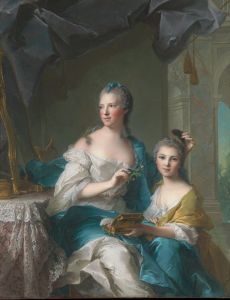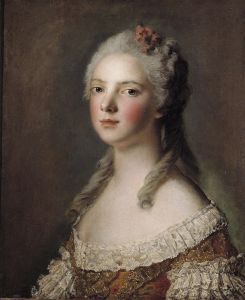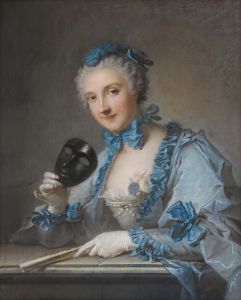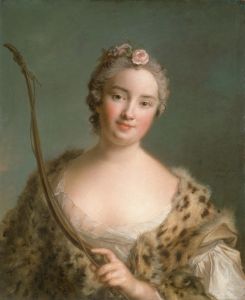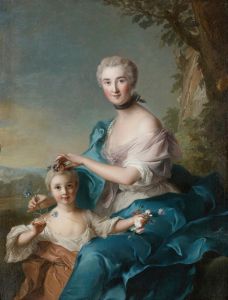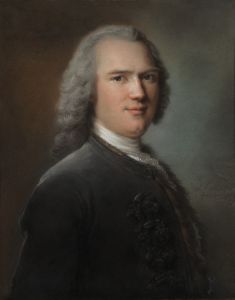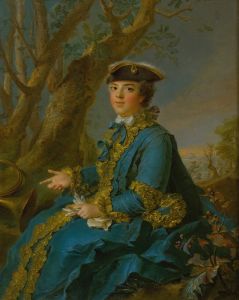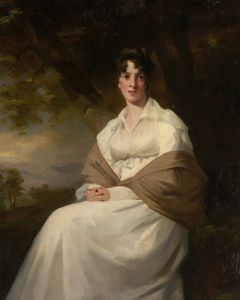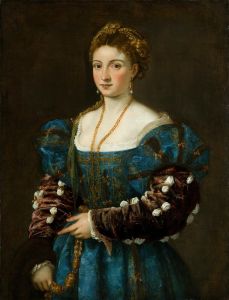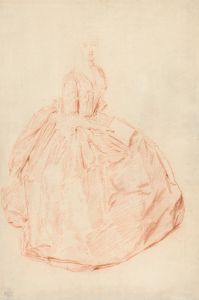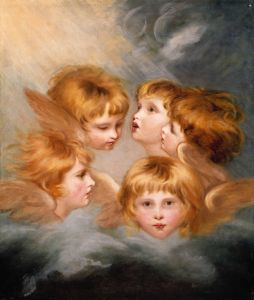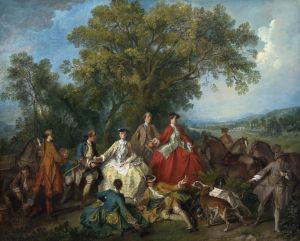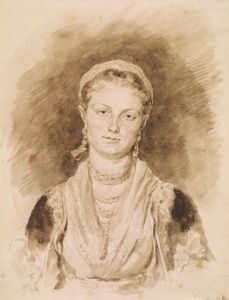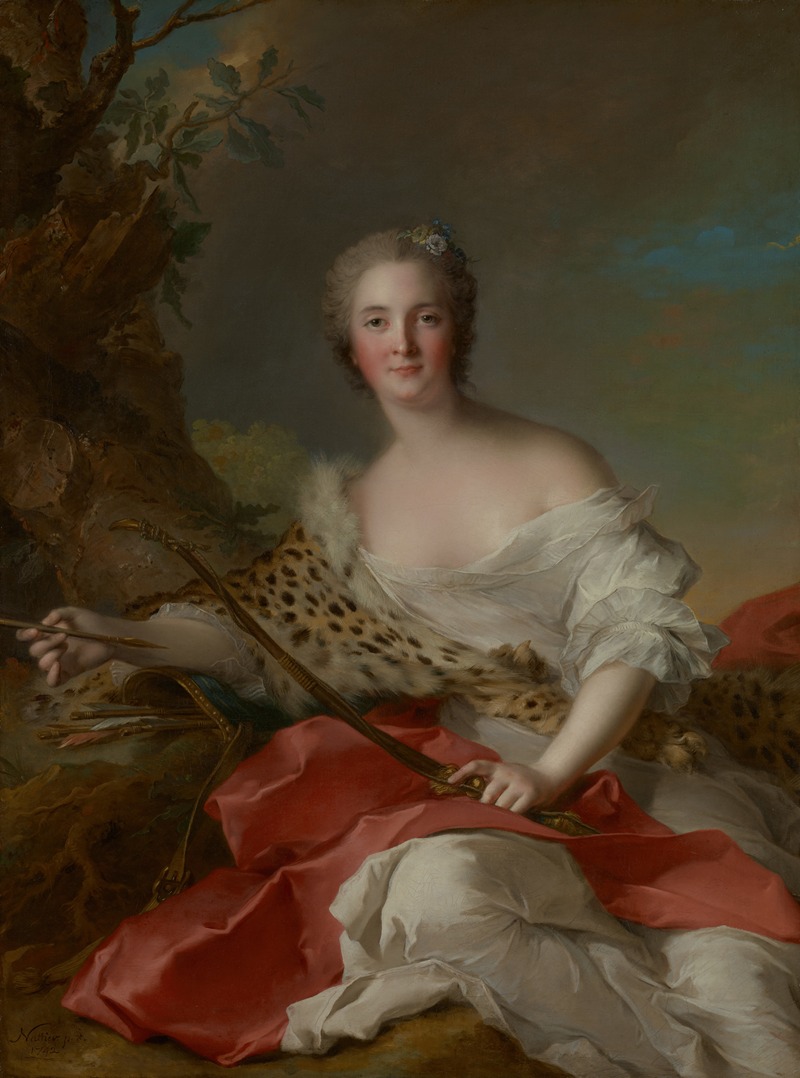
Portrait of Constance-Gabrielle-Magdeleine Bonnier de la Mosson as Diana
A hand-painted replica of Jean-Marc Nattier’s masterpiece Portrait of Constance-Gabrielle-Magdeleine Bonnier de la Mosson as Diana, meticulously crafted by professional artists to capture the true essence of the original. Each piece is created with museum-quality canvas and rare mineral pigments, carefully painted by experienced artists with delicate brushstrokes and rich, layered colors to perfectly recreate the texture of the original artwork. Unlike machine-printed reproductions, this hand-painted version brings the painting to life, infused with the artist’s emotions and skill in every stroke. Whether for personal collection or home decoration, it instantly elevates the artistic atmosphere of any space.
Jean-Marc Nattier's "Portrait of Constance-Gabrielle-Magdeleine Bonnier de la Mosson as Diana" is a notable example of 18th-century French portraiture, reflecting both the artistic style of the Rococo period and the cultural fascination with mythological themes. Nattier, a prominent French painter, was renowned for his ability to blend portraiture with allegorical and mythological elements, a skill that is vividly demonstrated in this work.
The painting depicts Constance-Gabrielle-Magdeleine Bonnier de la Mosson, a member of the French aristocracy, in the guise of Diana, the Roman goddess of the hunt, the moon, and nature. This choice of subject matter aligns with the Rococo era's penchant for classical mythology, which allowed sitters to be portrayed with an air of elegance and timelessness. By assuming the persona of Diana, Bonnier de la Mosson is not only immortalized in her beauty and grace but also associated with the virtues and attributes of the goddess, such as independence and strength.
Nattier's technique in this portrait is characteristic of his work, featuring a soft color palette, delicate brushwork, and an emphasis on the sitter's refined features. The artist's use of light and shadow enhances the three-dimensionality of the figure, while the background is typically less detailed, drawing attention to the subject. The attire and accessories chosen for Bonnier de la Mosson are carefully selected to reflect the attributes of Diana. She is often depicted with a crescent moon, a bow, and arrows, symbols that are subtly integrated into the portrait to reinforce her divine role.
The context of this portrait is significant, as it was created during a time when the French aristocracy was deeply engaged in the arts, commissioning works that would reflect their status and taste. Portraits like this one were not merely representations of individuals but were also statements of identity and power. By commissioning a portrait as Diana, Bonnier de la Mosson was aligning herself with the cultural and intellectual currents of her time, as well as asserting her place within the social hierarchy.
Nattier's portraits were highly sought after by the French elite, and his ability to flatter his subjects while incorporating allegorical elements made his work particularly appealing. His portraits often served as a means of social commentary, subtly reflecting the aspirations and values of his patrons. In the case of Bonnier de la Mosson, the choice to be depicted as Diana could be interpreted as a reflection of her personal qualities or aspirations, though such interpretations remain speculative without direct historical evidence.
The painting is an excellent representation of the Rococo style, characterized by its elegance, lightness, and emphasis on beauty and nature. Nattier's work, including this portrait, contributed to the development of portraiture during this period, blending realism with idealism and creating images that were both personal and universal.
Today, "Portrait of Constance-Gabrielle-Magdeleine Bonnier de la Mosson as Diana" is appreciated not only for its artistic merit but also for its historical significance, offering insights into the cultural and social dynamics of 18th-century France. It stands as a testament to Nattier's skill as a portraitist and his ability to capture the essence of his subjects within the broader context of mythological and allegorical themes.





